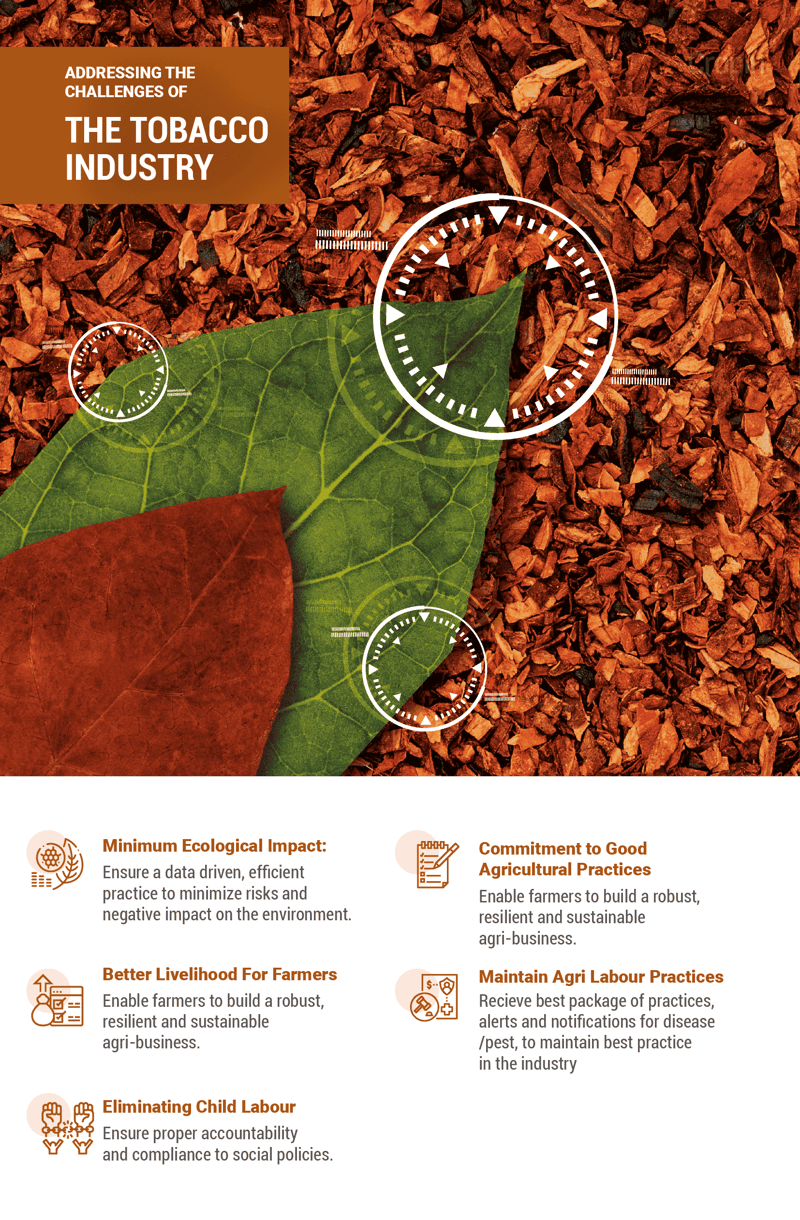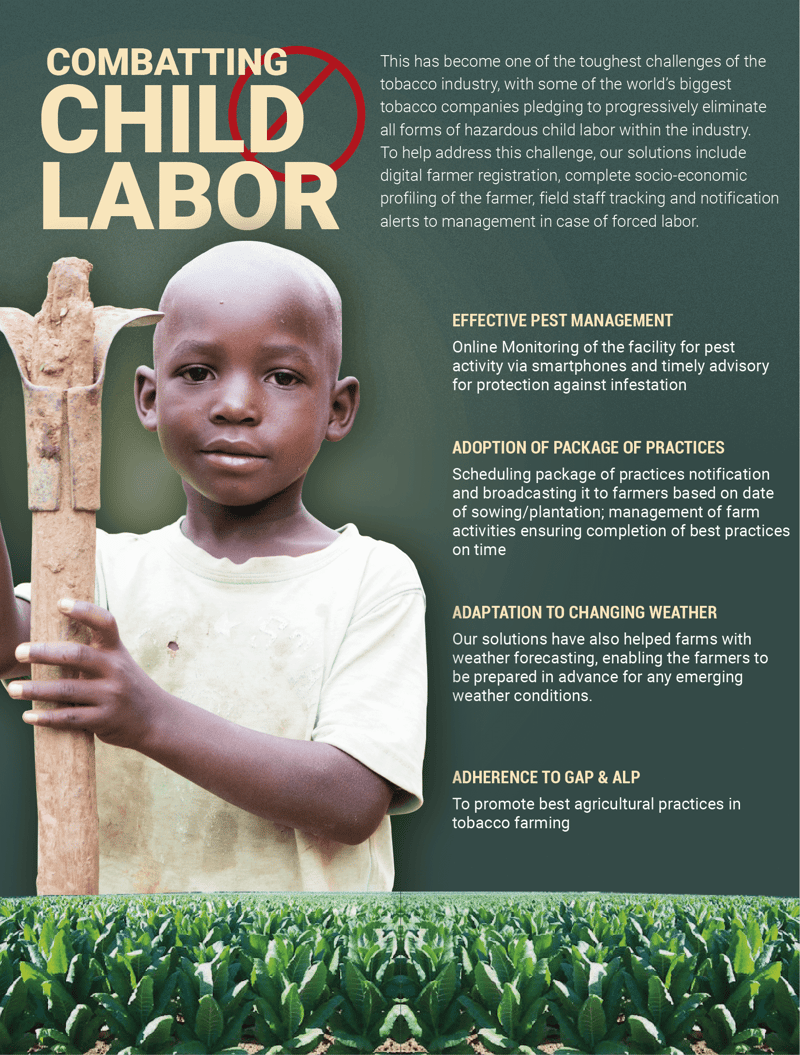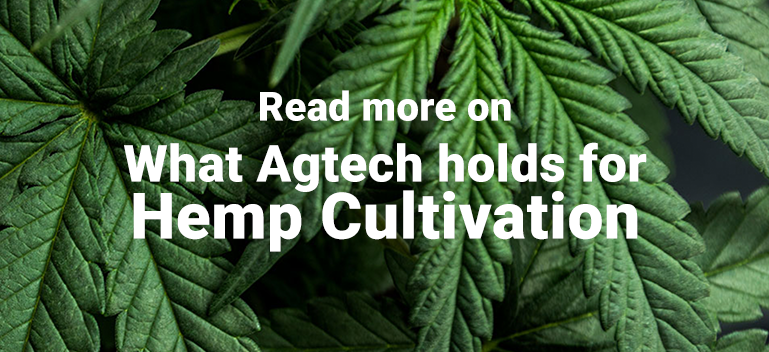Listen here:
Tobacco, an important cash crop in the global agricultural economy, is grown in more than 60% of the world’s nations. The tobacco industry remains an essential contributor to the economies of many countries and the livelihoods of millions of people across the globe including farmers, retailers, and those employed in the tobacco supply chain.
The focus of tobacco giants across the world is on sustainable farming with a minimum ecological footprint, better livelihood for farmers, elimination of child labor, and commitment to Good agriculture Practices (GAP) and Agricultural Labor Practices(ALP). The tobacco industry globally has been facing problems and issues such as exploitation of labor, the prevalence of child labor in hazardous work, pest infestation on farms, and poor management of farm activities.
Tobacco companies are working directly with farmers and suppliers to promote sustainable farming, GAP, and ALP. Through GAP, the tobacco industry is striving to improve working conditions on the farm, address the impact of tobacco on the environment, and make tobacco farming profitable and sustainable.
Through ALP, the focus is to improve labor practices and eliminate all forms of child labor on tobacco farms. The latter, in particular, has become one of the toughest challenges of the tobacco industry, with some of the world’s biggest tobacco companies pledging to progressively eliminate all forms of hazardous child labor within the industry.

We are Cropin Technology, an agri-tech company that has successfully digitized over 6.1 million acres, benefiting over 2.1 million farmers across the globe and working with over 225+ clients. With an adaptability rate of 92%, our SaaS-based services have enabled agribusinesses globally to analyze, interpret data, and gain real-time corrective insights. Our solutions will help the tobacco industry deal with the following key challenges:
- Combating child labor: Digital farmer registration, complete socio-economic profiling of the farmer, field staff tracking, and notification alerts to management in case of forced labor
- Effective Pest Management: Online monitoring of the facility for pest activity via smartphones and timely advisory for protection against infestation
- Adoption of package of practices: Scheduling package of practices notification and broadcasting it to farmers based on the date of sowing/plantation; management of farm activities ensuring completion of best practices on time
- Adaptation to changing weather: Our solutions have also helped farms with weather forecasting, enabling the farmers to be prepared in advance for any emerging weather conditions.
- Adherence to GAP & ALP: To promote best agricultural practices in tobacco farming

What did a Market Leader in the Tobacco Industry do?
One of the prominent players in the Indian tobacco industry wanted their operations to include GAP (Good Agricultural Practices) while also putting an end to unfair labor practices and child labor. The challenge was to streamline the hitherto unorganized operations into a smoothly functioning unit. This would help them cut down on discrepancies in terms of predicted yield, traceable harvest, and other quality issues.
To achieve this they needed a robust farm management system that could monitor field technicians (field agents), the adoption of a package of practices, and assess whether fair labor practices were being followed. The system would also need to provide accurate field and yield data. This is where Cropin’s award-winning product, SmartFarm, stepped in to provide the solution.
Farmers used to round off acres of land that were under harvest. Adding all estimations would lead to a high discrepancy which in turn adversely affected the output/ yield prediction. With SmartFarm’s satellite monitoring, the organization could accurately predict yield for the harvest cycle. Area audits conducted also helped them ascertain the exact acreage of land under harvest.
They wanted to be GAP and ALP compliant. Some of the benchmarks included water conservation efforts, no land refills should be used, no child labor, no forced labor, freedom of association, and proper sanitation. No foolproof system of reporting was in place. Documentation was earlier done on pen and paper.
They use our farmer and user survey forms on our app to capture these details. We have designed farmer survey forms based on GAP and ALP. Field technicians go to the farms, interview the farmer and fill out all the details in those two forms.
They also use our app to find the geo-location of:
- Water pollution source
- Child labor (farm/area where child labor was found)
- Any other audit-related information
They can also generate and download the following reports for audit or any other purpose.
- Traceability
- Reverse traceability
- Farmers profiles
- Nursery health
- Expenses
- Breach of practices
It takes 60 days to grow tobacco in the nurseries. Throughout this period of time, field technicians go to their assigned farms and follow a checklist to make sure all things are in place. To ensure germination is more than 95% and that there was consistency in the quality of tobacco produced every season, Cropin created a custom checklist that is to be adhered to.
The management did not have clarity on pest or disease infestations. In case of pest or disease infestation, one of the most common being ants, farmers can easily raise an alert to management, who can in turn provide instructions to field technicians.
For Hassle-Free Traceability
The company wanted to track many operational details such as how many main fields transplanted the plant from the nursery, which farmer is taking care of which field, etc. However, this proves difficult to document as farmers take crops from multiple nurseries. And using paper to document all such important details was not scalable for them.
The harvest section on SmartFarm enables them to file Stock Transfer Receipts from the nursery under the relevant harvest number. As a result, the company is able to easily track which seedlings are from which nursery. They are able to connect the nursery with the main field. If there is some issue with any tobacco farm in the main fields, they can track it back to the nursery from where it came and also the farmer or farmers associated with that nursery.
We provide the breakdown of costs at the plot level via our expenses section. Under this section, we have sections called man, material, and machine, through which the client can calculate the cost of production. The app captures the per-hour cost of a tractor and the per-kilogram cost of production. This helps the client maintain the ideal cost of production, which in turn helps them attract prime customers.
SmartRisk and What it can do for your Agriculture Practice
SmartRisk is the most disruptive deep learning Ag-Tech Platform. Agri-based intelligence is no longer skin deep. With Big Data, facilities like advanced satellite imagery, repositories of extensive historical and real-time data about land composition, and detailed weather and climate forecasts help food growers and businesses track, monitor, and evaluate every aspect of cultivation.
But what role can artificial intelligence play in agriculture today? The applications of AI in agriculture are limitless, with our solution- be able to mitigate risks and make well-informed lending decisions and expand your portfolio with confidence using leading-edge technologies & ground-truth data. Relevant data will help you plan and structure a meticulous sourcing and procurement strategy; leverage SmartRisk to detect crops, estimate acreage, monitor crop health, obtain an accurate forecast of yields, and be able to do much to strengthen your supply chain.
With the rise in water-stressed regions and the increase in the frequency of erratic rainfalls and monsoons, utilize our AI-powered platform to promote sustainable use of water by assessing parameters including regional weather, precipitation, and water stress. SmartRisk enables you to identify and mitigate plot risks at the right time to cut down on crop losses and improve the quality of the harvest.
Cropin’s AI Platform is the only decision intelligence solution you will ever need, to know more contact our team of solution experts today!







